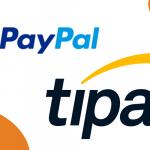How Cash Flow Finance Can Save Your Business
Cash Flow is the money that enters and exits your business within the same month. While money may seem to only exit the business, it still enters the business even when business is bad.
Money enters the business from people who purchase your products or pay for the services you offer. If customers have not paid in full at first, then cash flow will be coming in from collections from your Accounts Receivable department.
Money exits the business as a form of any expense for the business. This could include rent for the business space, wages of other employees, merchandise if you sell products just to name a few examples. Anything that would count as a business expense would be handled by the department titled: Accounts Payable.
Money vs. Actual Money
Pertaining to any kind of store or diners, money is in the form of whatever currency your country uses. You take cash for the items that were sold and if you choose, you could pay the bills of the business with that money. Businesses that hand money back and forth may have a problem recording an actual record of how much cash actually came in since all money doesn't have to be recorded unless it was paid by check or a service like Pay Pal where there are records kept by other institutions.
Why Cash Flow Is Vital To A Business
When not enough money is coming in to a business to cover their bills, that usually ends up with that business failing then dying.
According to the Small Business Administration: A lack of cash on hand is one of the reasons businesses that start fail. A business cannot survive when it no longer has money to cover the bills that are being generated due to the business simply operating.
Beginning The Business: This is the time that is the hardest to deal with cash flow finance issues. When a business begins, you have costs that must be taken care of before the business even begins. Once the business starts, you hope to grow a customer base fast that will bring repeat sales. You will either need a business loan or a credit line to generate positive cash flow.
Periodic Business: Cash Flow is vital for businesses that don't operate the entire year. While some businesses like the places that prepare taxes don't have to pay business costs for the time they're closed, it's trickier for businesses that operate during a certain season. The management of money coming and going can still be done though if it's handled with determination.
Vs. Profit: It is attainable to come out on top in a business transaction but have no actual cash in your hand. That happens because profit and money are two different things. Profit is handled by accounting who tracks the cost and sales of items while money is the number of dollars in the bank account. While money could be coming to you from customers who haven't paid in full, if you can't take that money then you won't have any. Your bookkeeping system will differentiate between profits and money. If you send a bill to be paid to the customer, that counts as a profit although you won't have money until that bill has been paid.
How To Determine Cash Flow
The best way to record cash flow of your business are through reports.
A Cash Flow report looks at the difference in money from expenses of the business and tracks whether other business accounts have gained money or lost money. A few examples of what this report will track is below:
If a customer pays off a bill in full
Purchases are made for something that needs to be used in the business
If you pay anyone else working in your business
If you want to analyze this, add together your unpaid purchases that you still have to pay off and see if that is lower or greater then the final amount of sales by the end of the month. If the purchases for the business come out at a greater amount then you will end up paying more then you made which is a way of deciding if you have a cash flow problem. The longer you pay a higher amount of expenses then you bring in from sales, the more debt you will build up.
Different Ways of Viewing Cash Flow
Unless you are a huge business that has been around for many years. the only time money comes in is when customers are purchasing your items. However bigger businesses can earn money other ways which is referred to as Free Cash Flow. These are ways money can come to your company besides having a lot of transactions with customers. Below are a couple of examples to illustrate this point better.
Investments: Money can come in and out of the business by purchasing or selling items that were used in the business but now serve no purpose other than taking up room.
Stocks: Money can come in when people buy stock in your company and you pay those stockholders when money comes into the business.
Short Term Cash Flow Assistance
If a business is not bringing in enough money then you could get assistance through a line of credit. This doesn't work the way a loan from a bank would. When you have a credit line, there is a set amount that you can borrow against when you need money then you pay that money back when you can afford it. Instead of interest being determined on the total amount you are able to borrow from, you are only charged interest on what you actually took out from that amount.
More to Read:
Previous Posts:




